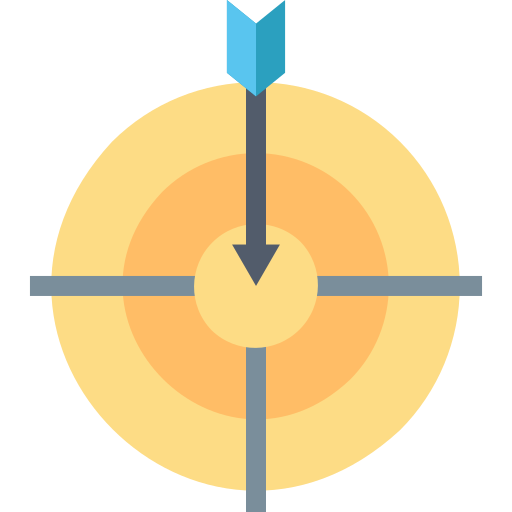Mean Reversion Trading: Best Indicators and Trading Strategies
If history is any indication, then those who pairs should eventually start moving in the same direction again. The following EUR/USD chart shows a year’s worth of gamestop leads meme stocks lower, on track for sharp weekly drop daily candlesticks. One way to accommodate the big stop loss is to reduce your trade size to a level where the big stop loss will still be within your acceptable account risk. • Mean reversion strategies depend on regularities staying consistent, and there are risks if structural shifts occur in the market or economy. Mean reversion trading is a strategy that can be both rewarding and challenging, offering unique advantages and potential drawbacks.
Usually, they do this with two correlated assets or instruments, such as the EURUSD and the GBPUSD. When hedge fund managers notice a divergence in the movement of these two instruments, they may buy the undervalued one and sell the overvalued one. In sum, the distinction between mean reversion and trend following is not merely theoretical; it has practical implications for trade execution, risk management, and portfolio construction. The mean reversion strategy is best suited for traders who monitor for significant deviations from historical averages and anticipate a reversal to the norm. These include the Mean Reversion Indicator (MRI), which can help traders identify the point at which an asset’s price has deviated significantly from its historical mean price. Futures market definition Considering the above provides investors with a framework to navigate volatile markets and potentially capitalize on price movements that revert to the mean.
Also, trend direction may change, or how much or how little the price moves may change. Just because a price has risen doesn’t mean it will fall to the mean; the mean could also rise to meet the price. On an asset’s trading chart, the mean is easily represented by a simple moving average (SMA).
Mean reversion in trading is grounded in the statistical concept of central tendency, indicating that data points tend to revolve around the mean. Traders observe when prices deviate significantly from the mean and anticipate a reversal. The strategy is commonly applied to short-term trading methods like swing trading and day trading. Mean reversion strategies involve attempts to generate a profit by trading on an asset as it returns closer to its average and away from an extreme. Traders use these approaches when performing a statistical analysis of market conditions – they are usually viewed as one component of an overarching strategy. Once the mean price is established, traders can then watch for significant deviations from this average.
How does the mean reversion trading strategy work?
In life, extreme events are often followed by normal events, as things tend to even out over time. Mean reversion is a useful market concept to understand, but it doesn’t assure profitable trading. While prices do tend to revert to the mean over time, we can’t know for sure, in advance, when that will happen. Prices can continue moving away from the mean for longer than expected.
The Best Trading Indicators for Mean Reversion Strategies
- However, before we go any further, I don’t recommend you trade this strategy straight off the website.
- This equilibrium state is typically represented by the long-term average price of a financial asset.
- Strategy optimization involves backtesting algorithms against historical data to confirm the strategy’s efficacy.
- Since it is possible that the two assets may not move in unison again, a stop-loss can be used to control the potential loss on each trade.
- Since this oscillation is a regular feature of price movements, traders have tried to create trading strategies around it.
For this mean reversion trade example, we will use the intraday mean reversion strategy. When the standard deviation of an asset is high, it suggests that the price movement is more volatile and, hence, may revert to the mean more significantly. The Ornstein-Uhlenbeck process is a stochastic process used in quantitative finance to download historical usd to dkk rates model mean reversion.
What are the key indicators that identify potential mean reversion opportunities?
Mean reversion exits are quick, nimble, and keep you in the trade for a very short period of time. Typically, the average trade duration of my mean reversion strategies on daily charts is one to three days, depending on the system. What we’re doing there is loading up on the trade as the elastic band gets more and more stretched, so when it snaps back, we’ve got more profit. I don’t do this since I go in once on each strategy because I would diversify between multiple strategies instead of having more entries in one trade. Mean reversion can work and be profitable trading against the primary trend, but the average profit portrayed tends to be much smaller. One of the challenges with mean reversion is that the average profit per trade in the mean reversion system is typically very low.
One step further, you can make use of Moving Average Convergence Divergence (MACD), a technical indicator of momentum that uses moving averages to establish a trend’s strength. The MACD uses three moving averages – over the long term, the short term and the average difference between the two – to demonstrate potentially overbought or oversold price conditions. In other words, extreme price fluctuations are temporary, and prices will eventually revert to their long-term average levels. This concept underpins mean reversion trading strategies, which aim to profit from such price movements. Mean reversion is a key concept in technical analysis, suggesting that asset prices tend to revert to their average value after significant deviations. This behavior is particularly useful in sideways or highly volatile markets, where buying and selling opportunities arise when prices reach extreme levels.
This strategy’s success depends on accurately assessing the risk and potential reward of the selected securities. It is crucial to consider factors such as the securities’ volatility, correlation, and response to market events. For instance, the EUR/USD pair has seen periods of substantial overvaluation and undervaluation over the past decade. However, these rates have often reverted to their long-term average, supporting the idea of mean reversion.
Our strategic partnerships with trusted companies support our mission to empower self-directed investors while sustaining our business operations. The assumption of mean reversion is foundational in various trading strategies, especially in stock and options trading. We will help to challenge your ideas, skills, and perceptions of the stock market. Every day people join our community and we welcome them with open arms. Each day we have several live streamers showing you the ropes, and talking the community though the action.




